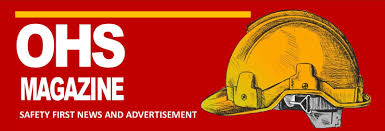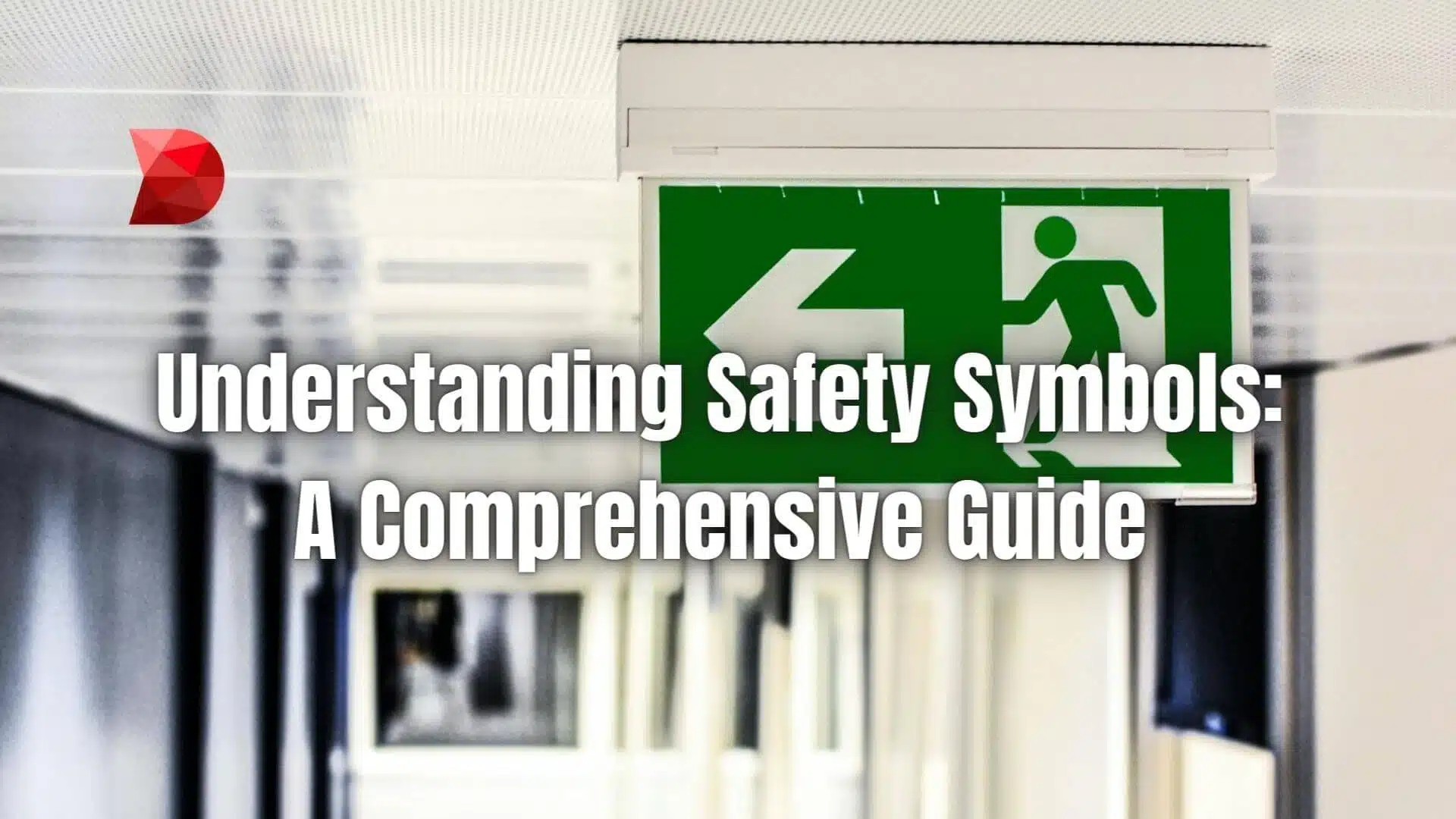4 Key Types of Safety Symbols: A Comprehensive Guide. Safety symbols are a crucial aspect of workplace safety and public health, providing instant, recognizable guidance to prevent accidents and mitigate risks. Effective safety symbols alert individuals to hazards, remind them of protective measures, and offer clear instructions on safe practices. These symbols use shapes, colors, and graphics to convey messages quickly, regardless of language barriers, enhancing understanding and compliance.
This article delves into the four key types of safety symbols: Prohibition, Warning, Mandatory, and Emergency symbols. Understanding these symbols can significantly improve safety in various environments, from construction sites to laboratories and public spaces.
1. Prohibition Symbols
Definition and Purpose
Prohibition symbols are designed to prohibit or restrict specific actions to prevent harm or avoid hazards. Often found in workplaces, public spaces, and equipment, these symbols warn individuals against actions that could cause injury, accidents, or exposure to hazards. They convey “do not” or “stop” instructions clearly and are often used for high-risk areas or operations.
Characteristics
- Color: Red circle with a diagonal line through the action or object depicted in black.
- Shape: Round, universally recognized as a prohibitive design.
- Examples:
- No Smoking: A cigarette with a red diagonal line through it, used in no-smoking areas to prevent fire hazards or protect air quality.
- No Entry: Indicates restricted access areas where entry is forbidden due to dangerous conditions.
- No Phones: Often found in sensitive environments, such as hospitals or laboratories, where phone use could interfere with equipment or procedures.
Importance of Prohibition Symbols
Prohibition symbols play a significant role in maintaining safety by discouraging behaviors that could lead to accidents or health issues. In environments where rules need to be strictly enforced for safety, these symbols reinforce policies, reduce risks, and protect everyone present.
2. Warning Symbols
Definition and Purpose
Warning symbols alert people to potential hazards and dangers. Unlike prohibition symbols, which forbid actions, warning symbols aim to make individuals aware of risks so they can take preventive steps. Common in industrial, construction, and laboratory settings, these symbols help individuals proceed with caution and are crucial for avoiding accidental injuries or exposure to harmful materials.
Characteristics
- Color: Yellow background with black pictograms.
- Shape: Triangular, which is widely recognized for signaling caution or warning.
- Examples:
- Electrical Hazard: A lightning bolt inside a triangle, warning of potential electric shock risk.
- Biohazard: Often used in medical and laboratory settings to indicate the presence of biological materials that may be infectious or harmful.
- High Temperature: A symbol showing flames or a heat icon, alerting people to hot surfaces that could cause burns or fires.
Importance of Warning Symbols
Warning symbols are essential for reducing the likelihood of accidents in high-risk areas. They not only prevent injuries but also protect equipment and infrastructure by encouraging caution and promoting awareness of potential dangers. These symbols empower individuals to make safer decisions in hazardous environments.
3. Mandatory Symbols
Definition and Purpose
Mandatory symbols are used to communicate actions that must be performed to ensure safety. These symbols represent requirements rather than prohibitions or warnings, instructing individuals on necessary protective measures. In workplaces, construction sites, and labs, mandatory symbols remind workers to wear personal protective equipment (PPE) and to follow specific procedures to reduce the risk of accidents and health hazards.
Characteristics
- Color: Blue circle with a white pictogram.
- Shape: Round, which helps convey instructions in a clear and straightforward way.
- Examples:
- Wear Safety Glasses: A symbol of glasses, often required in environments where particles, chemicals, or sparks could injure the eyes.
- Wear Ear Protection: Common in industrial areas with loud machinery to protect against hearing damage.
- Wear Gloves: In laboratories or industrial settings, this symbol reminds workers to use gloves when handling hazardous materials or equipment.
Importance of Mandatory Symbols
Mandatory symbols ensure that essential safety practices are followed by visually reinforcing rules. They not only protect individual workers but also foster a culture of responsibility and compliance, reducing the potential for injuries and ensuring that safety standards are consistently met across the workplace.
4. Emergency Symbols
Definition and Purpose
Emergency symbols provide guidance on safety measures to be taken during emergencies. They help individuals locate emergency exits, first aid stations, fire equipment, and safety devices quickly. These symbols are vital for managing evacuations and handling crises efficiently, particularly in buildings, public areas, and facilities where quick access to emergency resources can save lives.
Characteristics
- Color: Green or red background with white pictograms, depending on the purpose.
- Shape: Generally rectangular or square to make them easily recognizable.
- Examples:
- Emergency Exit: An icon of a running person, indicating the direction of exits for safe evacuation.
- First Aid Station: A white cross on a green background, marking the location of first aid kits or medical assistance.
- Fire Extinguisher: Red background with a white extinguisher icon, directing individuals to fire-fighting equipment in case of a fire.
Importance of Emergency Symbols
Emergency symbols are crucial for timely and efficient response during crises. They reduce panic and confusion, ensuring that people can evacuate safely and that first responders can access necessary equipment. By clearly marking emergency resources, these symbols contribute to life-saving procedures and support a coordinated response during critical situations.
Why Are These Symbols Important?
Each type of safety symbol plays a distinct yet interconnected role in creating a safe environment. Together, they provide a multi-layered approach to safety by offering information on actions to avoid, precautions to take, requirements to follow, and resources to use in emergencies.
- Prevent Accidents: Prohibition and warning symbols directly contribute to preventing accidents by discouraging risky actions and highlighting hazards.
- Enhance Compliance: Mandatory symbols encourage compliance with safety protocols, ensuring everyone follows best practices.
- Facilitate Emergency Response: Emergency symbols help people navigate crises efficiently, supporting organized evacuations and access to life-saving resources.
Best Practices for Using Safety Symbols
To maximize the effectiveness of safety symbols, they should be:
- Strategically Placed: Symbols should be positioned in areas where they are most relevant, such as near machinery, entrances, exits, or storage areas.
- Consistently Maintained: Signs should be kept clean and visible, with any worn or damaged symbols promptly replaced.
- Educated: Workers and visitors should be trained on the meanings of various safety symbols and the actions they should take when encountering them.
- Standardized: Symbols should follow standardized guidelines, such as those outlined by OSHA or ISO, to ensure universal understanding. 4 Key Types of Safety Symbols: A Comprehensive Guide
Conclusion
Safety symbols play a vital role in workplace safety and public health, enabling effective communication across different languages and literacy levels. Prohibition, warning, mandatory, and emergency symbols each serve unique purposes, from preventing accidents to managing emergencies. By implementing these symbols properly, organizations can create a safer environment, fostering a culture of awareness, compliance, and readiness to respond to any safety situation.











